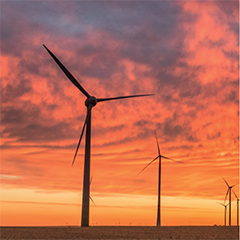Germany has a wind problem. A big problem. In the first half of 2019 alone, only thirty-five new wind turbines were built nationwide. This staggering low number is eighty percent less than in 2018, and the lowest number of turbines built in twenty years! In fact, while most wind comes from the north of Germany, some does come from the south. However, in the first half of this year, not one turbine in Bavaria or Hesse was put into circulation. Wind power is not the only loss, jobs are also lost. In 2017 the Germany wind industry lost more than 20,000 jobs than in 2016. Germany has long lost its status of the world leader in wind energy.
Also, during the first six months of 2019, only 231 megawatts of new wind were installed, which represents a staggering 82% decline compared to the first half of 2018. While Germany is expected to install between one and two gigawatts of wind energy this year, it is below the 4.3 average of the last five years, by over 100%! Germany’s goal of 65% renewable by 2030 is in serious jeopardy.
BWE President, Hermann Albers, was recently quoted in regards to the mass opposition to wind farms that ‘this development calls into question the success of Germany’s energy transition.’ Achim Derck, the head of the German Federation of Chambers of Commerce and Industry (DIHK) went further to state that ‘with regard to the expansion of onshore wind power, Germany has moved from the fast to the breakdown lane.’
And it doesn’t get better from here. Around 160 miles south of Berlin, in the district of Saale-Orla in Thuringia, the county committee agreed to give citizens’ initiative a 2,000 euro grant when they file a report against wind farms. Think about that for a moment. A government entity is paying 2,000 euros to fight wind farms, against a national government strategy of promoting wind. In Brandenburg, the state has passed a law that forces wind farm operators to pay an annual stipend of 11,000 euros per turbine to the municipality where the turbine lies.



























